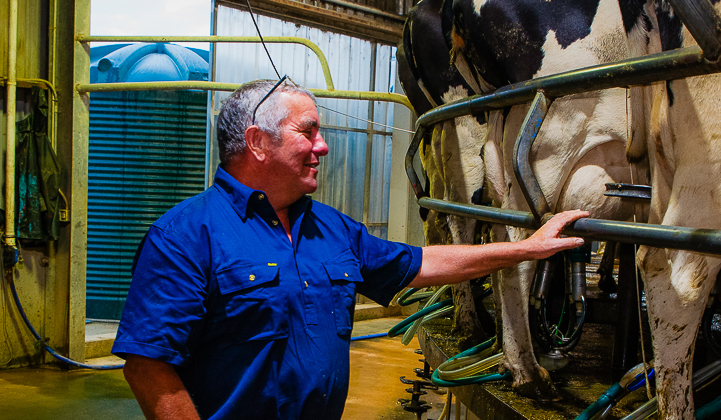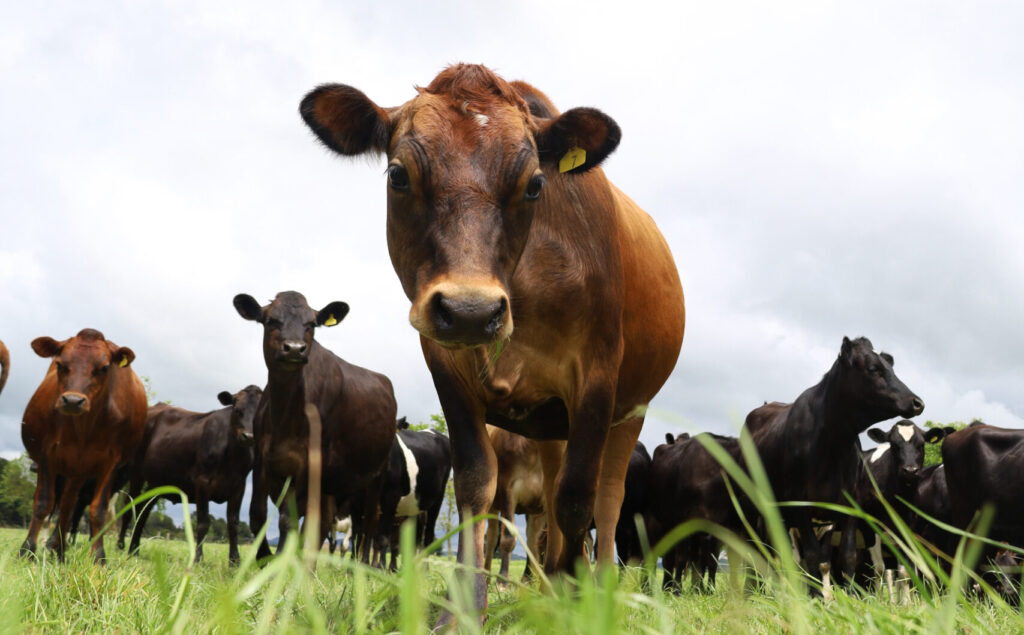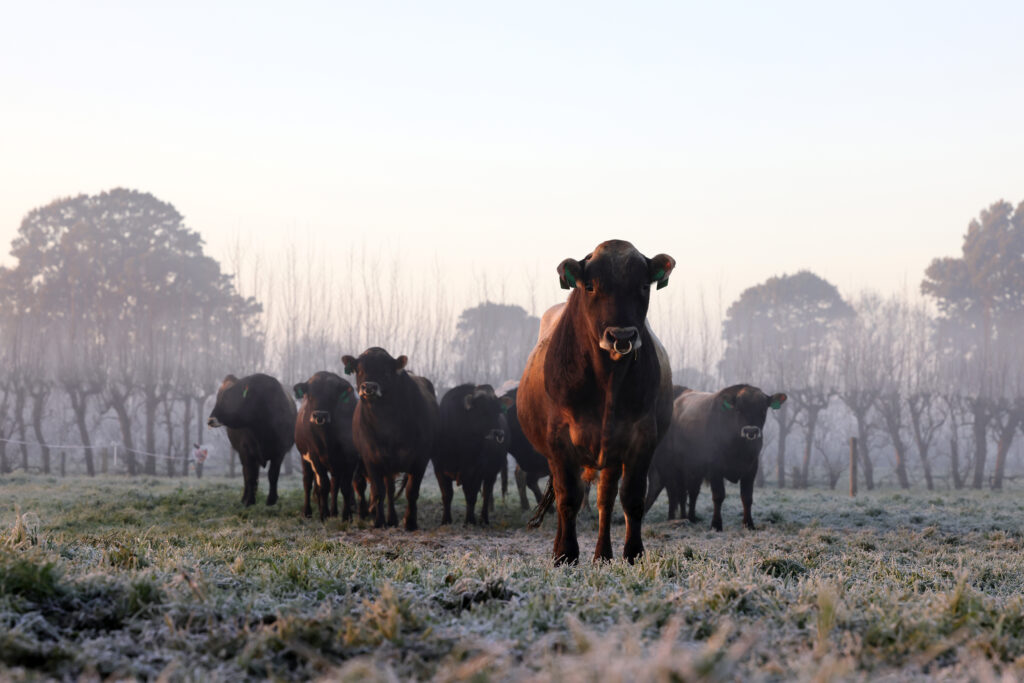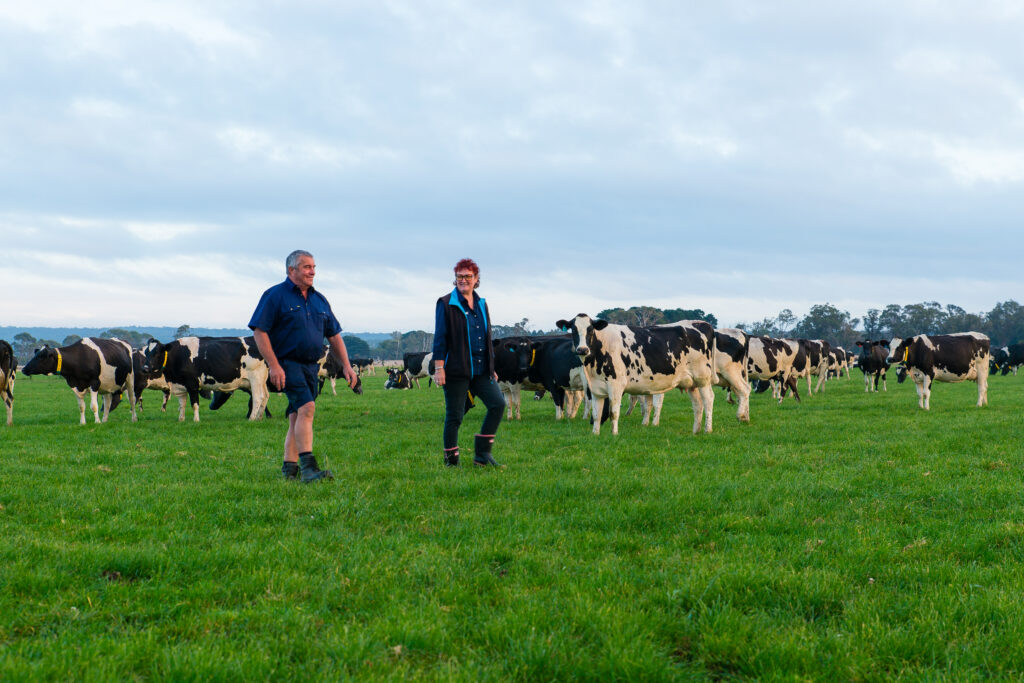When patience, passion and precision pays off
An often-forgotten region of Australian dairy, South Australia’s Mount Schank is efficiently going about its business. LIC Australia Sales and Operations Manager Mike Rose spent some time there visiting farmers and made a special visit to Mike Green’s farm in the heart of the region.
The Green family bought their Mount Schank property in 2001 when they were on the lookout for their next opportunity. Mount Shank had everything they wanted – larger farm sizes, fertile free-draining soil and fantastic water supply for irrigation.
This enthusiasm and attention to detail have produced a top-notch herd and some stand-out cow families. Mike has developed the herd over two decades from out of nowhere into the top 30 for Holstein on BPI and fourth-ranked for Aussie Red.
The Greens aim to feed their cows well, and you can tell they are getting it right from their production stats. They consistently produce over 600kg milk solids (MS) per cow and, in their best year, achieved more than 700kgMS. The system is, however, remarkably simple. The cows’ diet is made up of grass, grass silage and around 2 tonnes of grain per year in the bail. They run a split calving pattern with late summer calvers and a spring group.
The Greens inherited a pure Holstein herd and quickly realised they needed cows better suited to their system. “They produced lots of litres but just struggled to get in-calf and put on weight. During calving I’d have to check them three or four times, and they just didn’t last,” says Mike.
The Greens decided to put Jersey over the whole herd for two years straight. “People thought we were mad, but some of those first-crosses were the best cows I’ve ever milked. They milked like trains and got in-calf easily. We had a number of them last to 12 years old and producing over 700kgMS,” says Mike.
Mike then developed a line of New Zealand Holstein-Friesians and later a line of Aussie Reds. This is what the herd is primarily made of today.
The Green’s breeding policy has stayed consistent, as Mike explains, “We have always bred for components, fertility and cows that display strength and positive udder traits. We don’t worry about milk volume, as we can feed for litres and the dairy company pays for solids not litres.
“Over the years we have had plenty of salespeople and other farmers ask why we stick with the New Zealand genetics, but for us they just work. When you have a herd doing over 100% of their body weight in milk solids, that gets in-calf quickly and is generally easy-care, why would you change?
“People comment that the New Zealand animals’ udders are not up to big production but there are not many people doing more production than our top cows, and it has never been a big issue for us.
“We have probably used well over 100 bulls from LIC over the years and I can only think of two or three that were flops with either some temperament or udder issue. That’s a pretty dam good hit rate and a testament to the LIC Sire Proving Scheme which to me separates LIC genetics from the rest. You know when you only have a dozen bulls make the cut out of 200 a year that you are getting the cream of the crop.”
The bulls behind the breeding
Mike is currently using the likes of Beamer, Breakthrough, Vector and Sierra. He is happy to go back and use a bull again once he’s seen how well the daughters are performing. He is quite taken by the Vector calves saying, “if those animals don’t turn out to be damn good milking cows, I’ll eat my hat! I just love the look of them.”
“Bulls like Surething, Tommo, Top Doggie and Remedy have all performed beyond expectations in our herd. Of course we used Minted (Mint Edition) extensively. He was right up there with Hugo and probably the best bull LIC has ever breed,” he says.
More recently the Greens used some KiwicrossTM bulls as an experiment, using bulls like Sierra and Solaris over their yearlings. Although a little worried about consistency to begin with, so far Mike is pleasantly surprised. “The daughters from both the bulls are fantastic little cows – lovely udders, strong animals and are just so quiet to milk. They just came into the shed and settled right down from day one. I tell other farmers now, you can’t go wrong with using bulls like that.”
Following our long walk through the herd we sat down for a cup of tea and Mike pulled up some pedigrees and production information from his extensive records. He proudly showed a few cows that did more than 100,000 litres over their lifetime. The oldest cow currently in the herd, a Camelota daughter, is currently sitting at 93,000 litres as a 12-year-old.
Breeding a first-rate herd of cows takes patience, attention to detail and passion – qualities the Greens practice well. As a result they have bred some superior cows and get the best out of them by feeding them well.
A herd to be proud of
Mike receives visitors from far and wide to check-out both his red and black and white cows, and they are always impressed. Recently the World Ayrshire Conference group visited his farm. Although they were there mainly to see the Ayrshire cows there were plenty of positive comments on the black and whites. Highly esteemed UK show judge, Duncan Hunter, later contacted Mike to praise him on his herd.
“I was extremely impressed with the LIC portion of this herd. The herd was so uniformed and showed balance throughout. The cows showed obvious strength through the front end with deep bodies. Bone quality was evident through the legs with the cows displaying fantastic locomotion. The udders were fantastic! High wide rear udders with excellent attachments and great teat placement. All these traits combined will ensure these cows stay around for many years ensuring profit for the business,” Hunter commented.
Read about some of LIC Australia’s top Holstein Friesian sires





